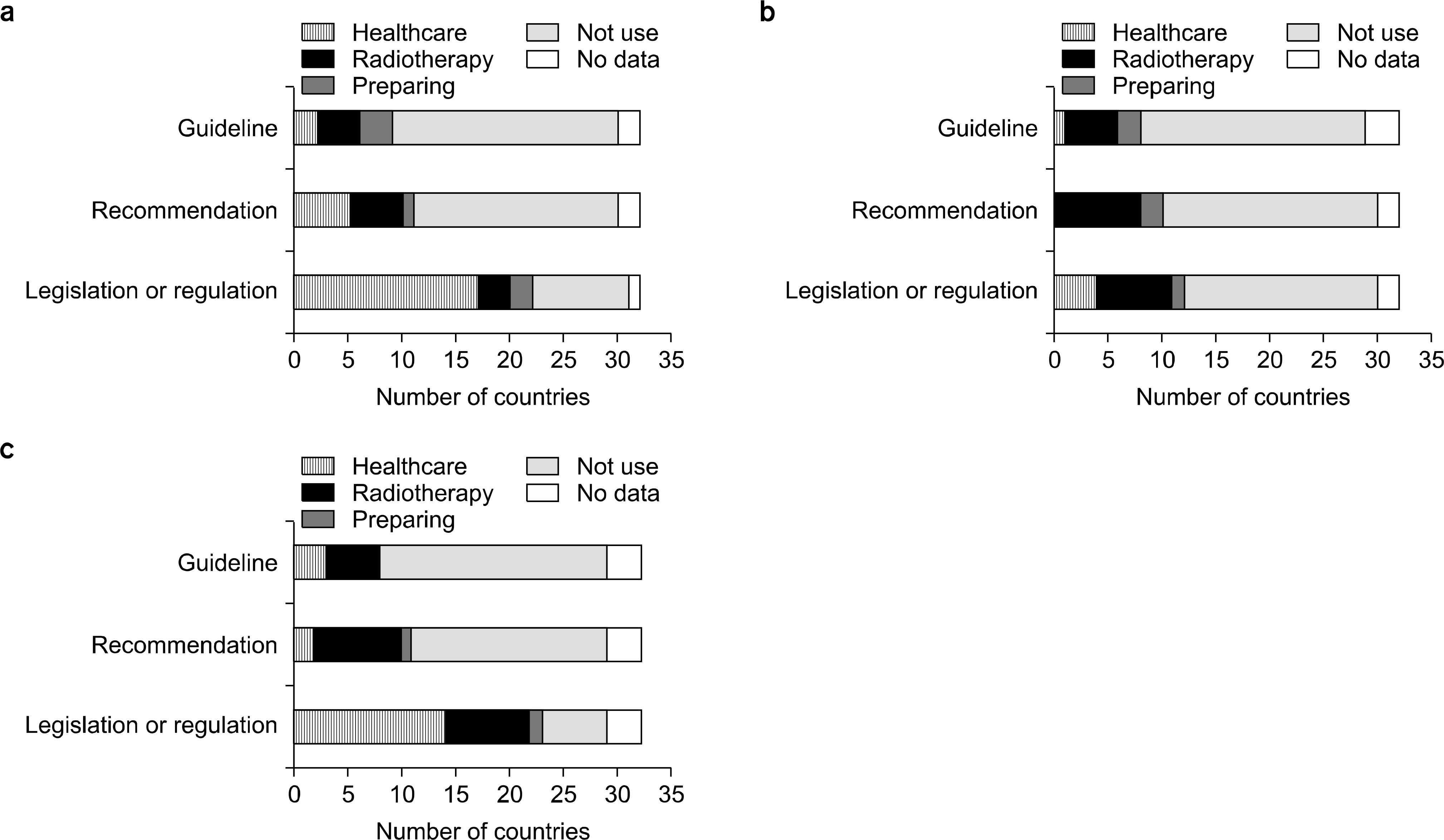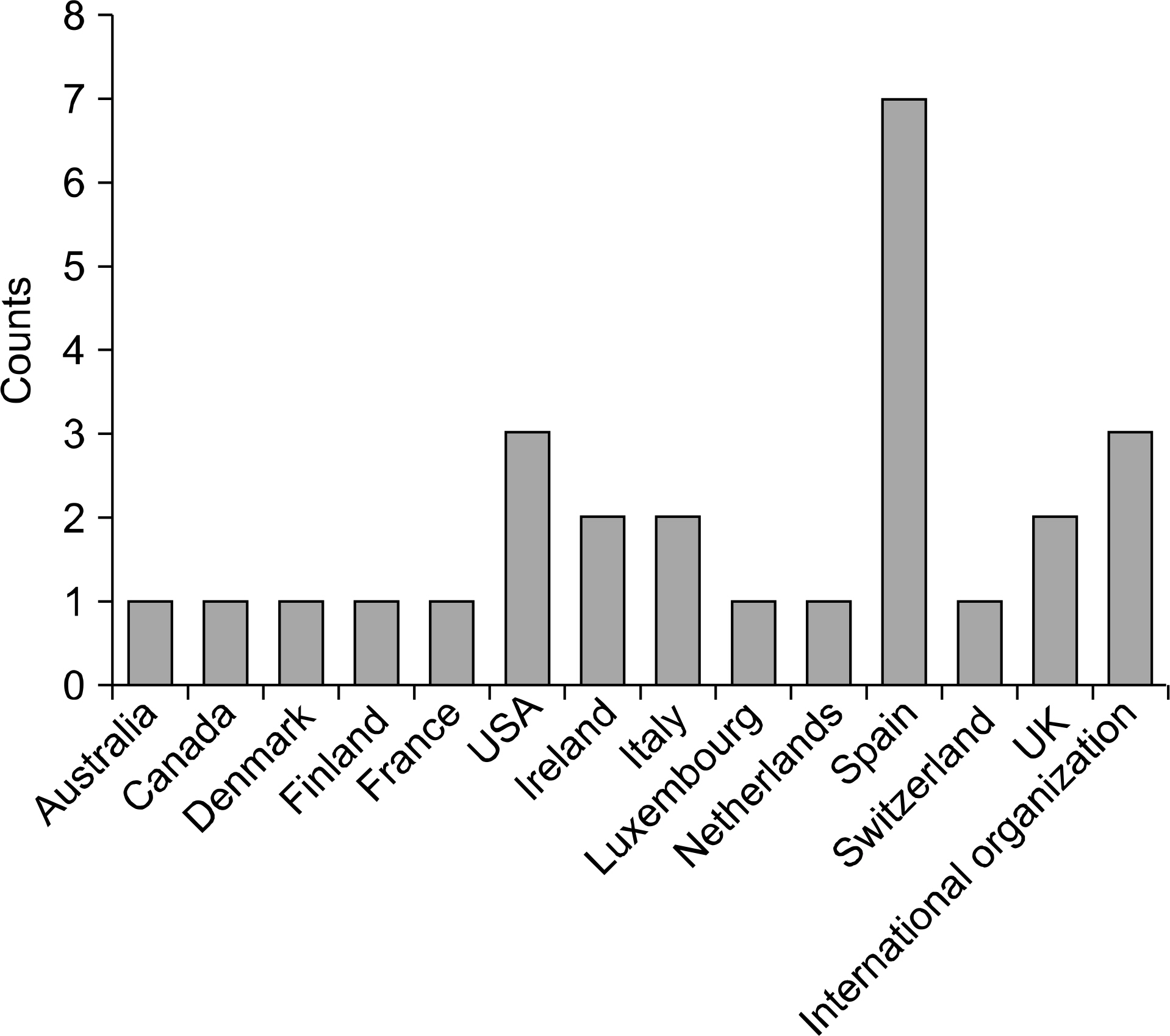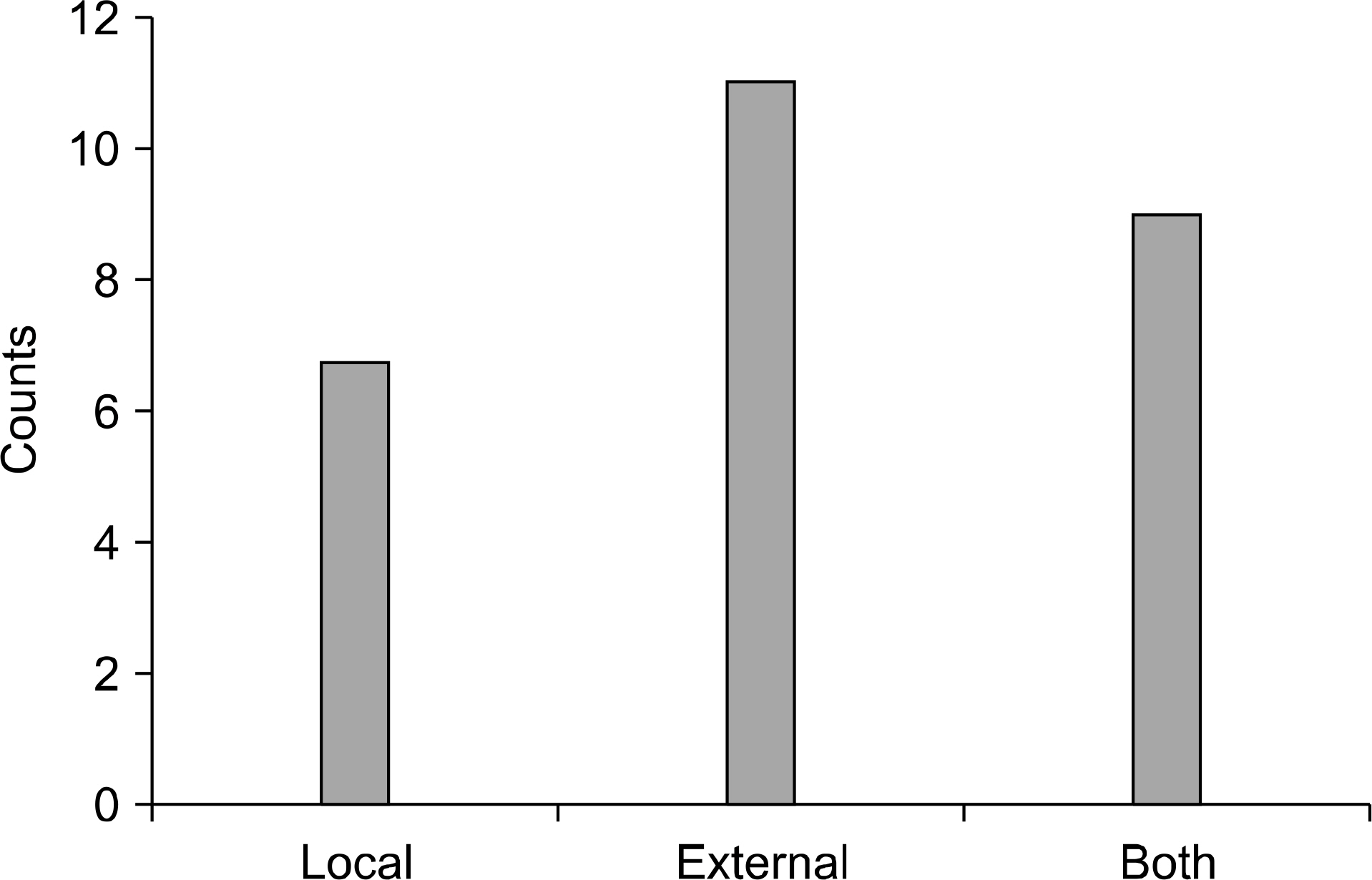Prog Med Phys.
2016 Sep;27(3):139-145. 10.14316/pmp.2016.27.3.139.
A Study of Institutional Status of Risk Management for Radiotherapy in Foreign Country
- Affiliations
-
- 1Radiological & Medico Oncological Sciences, University of Science and Technology, Daejeon, Korea. shchoi@kirams.re.kr
- 2Division of Medical Radiation Equipment, Korea Institute of Radiological and Medical Sciences, Seoul, Korea.
- 3Department of Radiation Oncology, Kyung Hee University Hospital, Seoul, Korea.
- 4Department of Radiation Oncology, Kyung Hee University Hospital at Gangdong, Seoul, Korea.
- 5Research Institute of Clinical Medicine, Kyung Hee University Hospital at Gangdong, Seoul, Korea.
- 6Department of Bio-Convergence Engineering, Korea University, Seoul, Korea.
- 7Department of Radiation Oncology, School of Medicine, Yonsei University, Seoul, Korea.
- 8Department of Radiation Oncology, Inje Ilsan Paik University Hospital, Goyang, Korea.
- KMID: 2376544
- DOI: http://doi.org/10.14316/pmp.2016.27.3.139
Abstract
- With the development in field of industry and medicine, new machines and techniques are being launched. Moreover, the complexity of the techniques is associated to an increasing risk of incident. Especially, a small error in radiotherapy can lead to a serious patient-related incident, risk management is necessary in radiotherapy in order to reduce the risk of incident. However, in field of radiotherapy, there are no legally binding clauses for risk management and there is an absence of risk management systems at an institutional level. Therefore, we analyzed institutional status of risk management, reporting & classification systems, and risk assessment & analysis in 31 countries. For risk management and reporting systems, 65% of countries investigated had legislation or regulations; however, only 35% of countries used classification systems. It was found that 43% more countries had legislation for risk management in healthcare than those for radiotherapy; 19% more countries had reporting systems for healthcare than those for radiotherapy. For classification systems, 60% more countries had legislation, recommendation, and guidelines in the field of radiotherapy than those for healthcare. Recently, international institutes have published several reports for risk management and patient safety in radiotherapy, owing to which, countries adopting risk management for radiotherapy will gradually increase. Before adopting risk management in Korea, we should precisely understand the procedures and functions of risk management, in order to increase efficiency of risk management because classification & reporting system and risk assessment & analysis are connected organically, and institutional management is needed for high quality of risk management in Korea.
Keyword
MeSH Terms
Figure
Reference
-
1. ISO 31000. Risk management-Principles and guidelines on implementation. International Organization for Standardization; 2009.2. Osborn S, Williams S. In: Seven steps to patient safety-The full reference guide. National Patient Safety Agency; 2004.3. David LC, Dubetz M, Heshmati R, et al. In: A Reference Guide for Learning from Incidents in Radiation Treatment. HTA Initiative #22; 2006.4. Battles JB, Stevens DP. Adverse event reporting systems and safer healthcare. Qual Saf Health Care. 2009; 18:2.
Article5. Ekaette EU, Lee RC, Cooke DL, et al. Risk analysis in radiation treatment -application of a new taxonomic structure. Radiother Oncol. 2006; 80:282–287.
Article6. ISO/IEC 31010:2009: Risk management - Risk assessment techniques. International Organization for Standardization (2009).7. WHO. Radiotherapy Risk Profile. World Health Organization; 2008.8. Radiation Protection N° 181. General guidelines on risk management in external beam radiotherapy. Luxembourg: European Commission; 2013.9. AAPM Task Group 100 report. Application of risk management methods to radiation therapy quality management. American Association of Physicist in Medicine; 2016.10. ICRP Publication 86. Prevention of Accidental Exposures to Patients Undergoing Radiation Therapy. Annals of the ICRP; 2000.11. ICRP Publication 112. Preventing Accidental Exposures from New External Beam Radiation Therapy Technologies. Annals of the ICRP; 2009.12. HTA Initiative #15. Quantitative Approaches to Patient Safety - Research in Risk Analysis and Risk Management as Applied to Radiotherapy. Canada: AHFMR; 2004.13. Radiation Oncology Practice Standards New Zealand. A tripartite initiative RANZCR, AIR and ACPSEM. 2013.14. PHE-CRCE-016. Data Report on Radiotherapy Errors and Near Misses (December 2011 to November 2013). Public Health England; 2014.15. Korea-ROSIS. http://www.rosis.kr/index.asp.16. AHRQ WebM&M. 2013 http://www.webmm.ahrq.gov/.17. AIMS. 2000 http://www.apsf.net.au/.18. ARIR. 2013 http://www.arpansa.gov.au/radiationprotection/arir/index.cfm.19. Vigie radiothérapie. 2013 https://vigie-radiotherapie.asn.fr/.20. DPSD. 2007 http://www.dpsd.dk/.21. AHFMR HTA ILS. 2007 http://www.ahfmr.ab.ca/.22. JCAHO. 2005 http://www.jointcommission.org/.23. NRC. 2013 http://nrc.gov/.24. ICHT/NRLS. 2003 http://www.nrls.npsa.nhs.uk/.25. PRISMA-RT. 2008 http://www.prisma-rt.nl/.26. ROSIS. 2008 http://www.rosis.info.27. Swiss-ROSIS. 2004 http://www.rosis.ch/.28. SAFRON. 2012 http://rpop.iaea.org/safron/.29. SiNASP. 2013 http://www.sinasp.es/.30. Cantone MC, Ciocca M, Dionisi F, et al. Application of failure mode and effects analysis to treatment planning in scanned proton beam radiotherapy. Radiat Oncol. 2013; 8:127.
Article31. Scorsetti M, Siqnori C, Lattuada P, et al. Applying failure mode effects and criticality analysis in radiotherapy: lessons learned and perspectives of enhancement. Radiother Oncol. 2010; 94(3):367–374.
Article32. Ciocca M, Cantone MC, Veronese I, et al. Application of failure mode and effects analysis to intraoperative radiation therapy using mobile electron linear accelerators. Int J Radiat Oncol Biol Phys. 2012; 82(2):e305–e311.
Article33. Vilaragut JJ, Duménigo C, Delgado JM, et al. Prevention of accidental exposure in radiotherapy: the risk matrix approach. Health Phys. 2013; 104(2):139–150.34. Portaluri M, Fucilli FI, Bambace S, et al. Incidents analysis in radiation therapy: application of the human factors analysis and classification system. Ann Ist Super Sanita. 2009; 45(2):128–133.
- Full Text Links
- Actions
-
Cited
- CITED
-
- Close
- Share
- Similar articles
-
- A Comparative Study on Health Status and Health Determinants of Foreign Workers and Native Workers
- Running of high patient volume radiation oncology department during COVID-19 crisis in India: our institutional strategy
- Management of Gastrointestinal Foreign Body Ingested during Dental Procedure
- The Current Status and Necessity of Metabolic and Bariatric Surgery Accreditation System in Foreign Country
- Bladder performation due to foreigh body with stone in bladder: a case report





